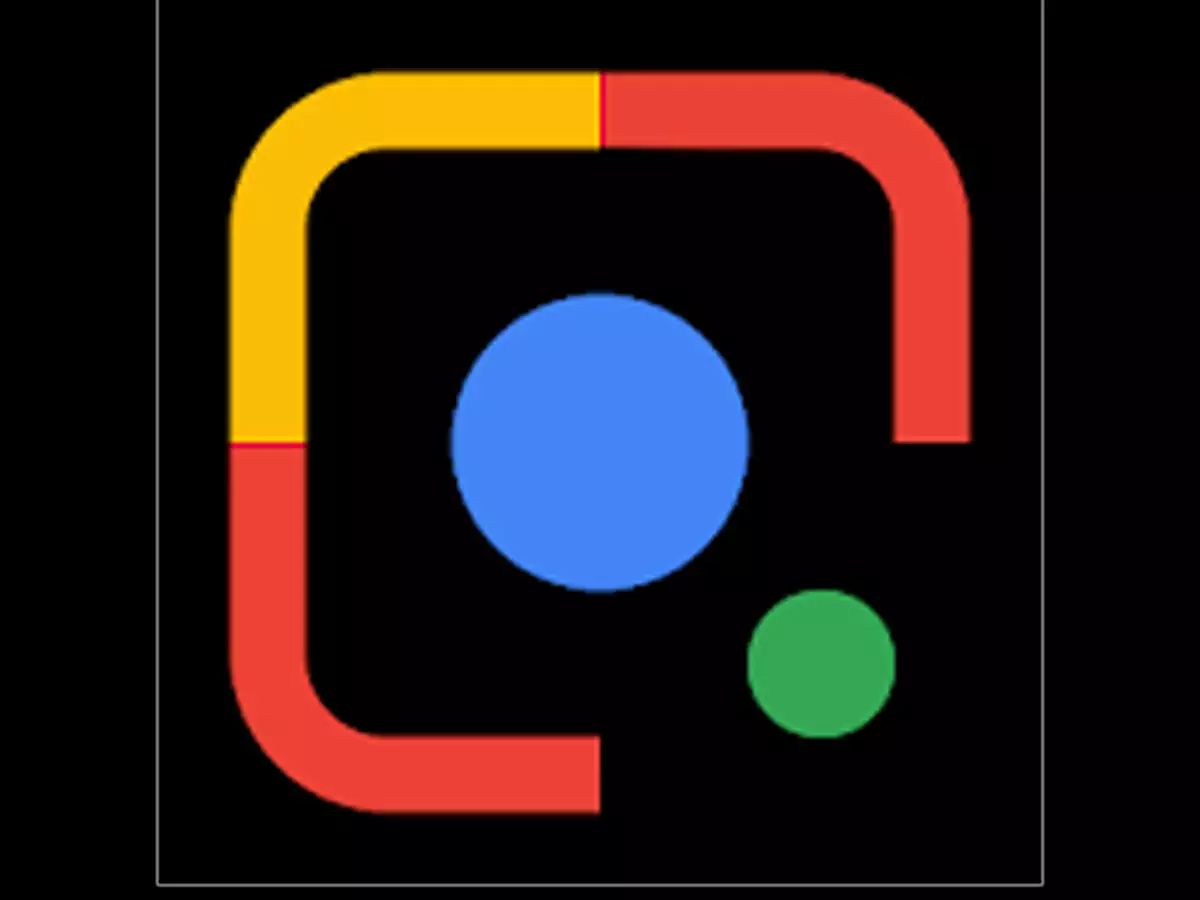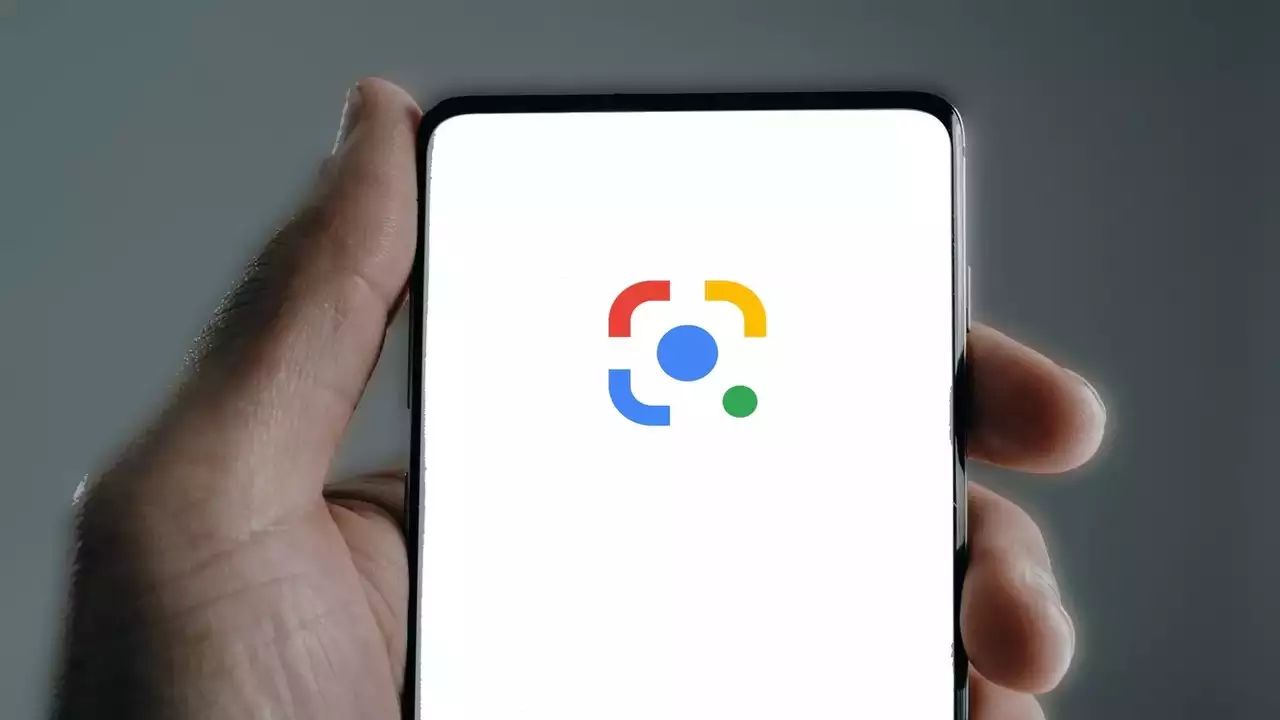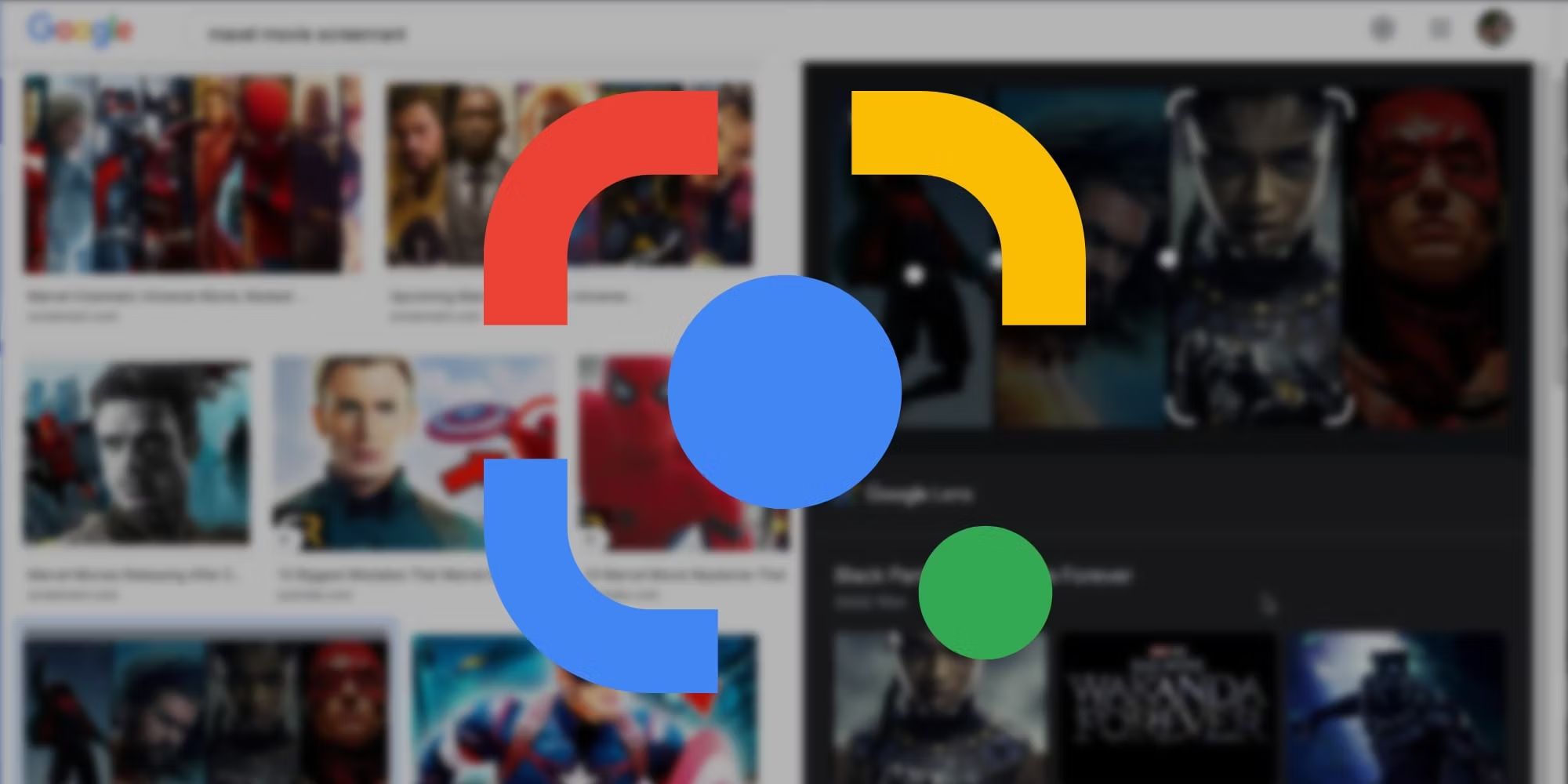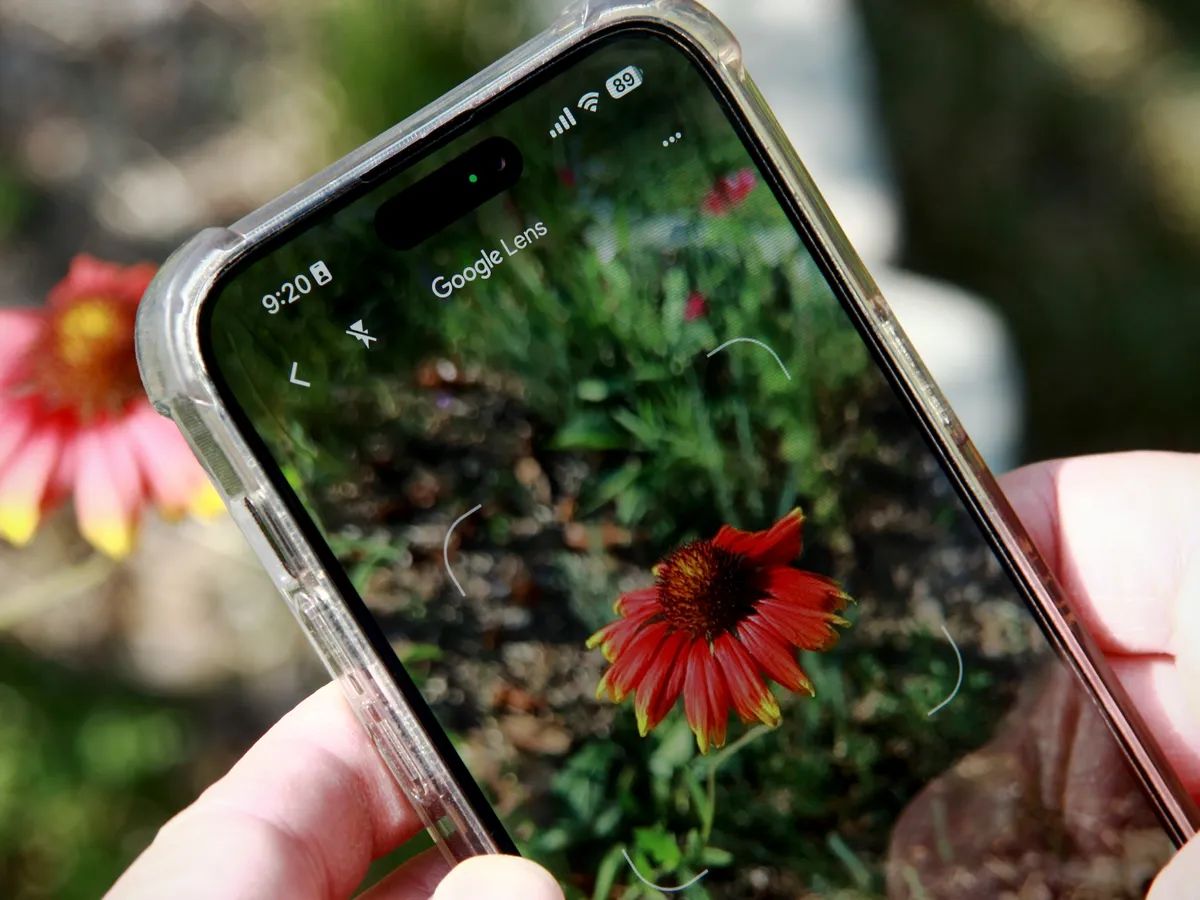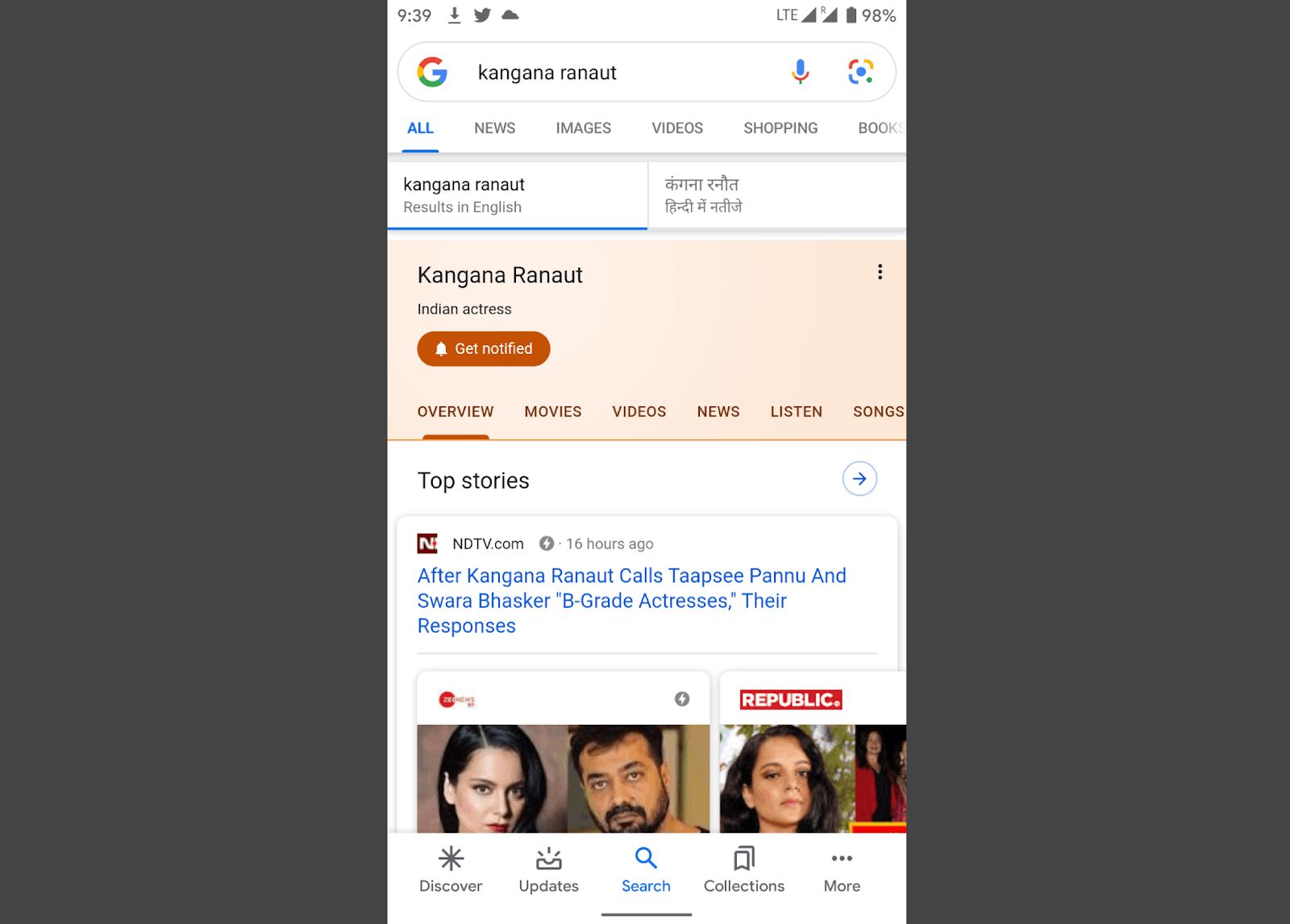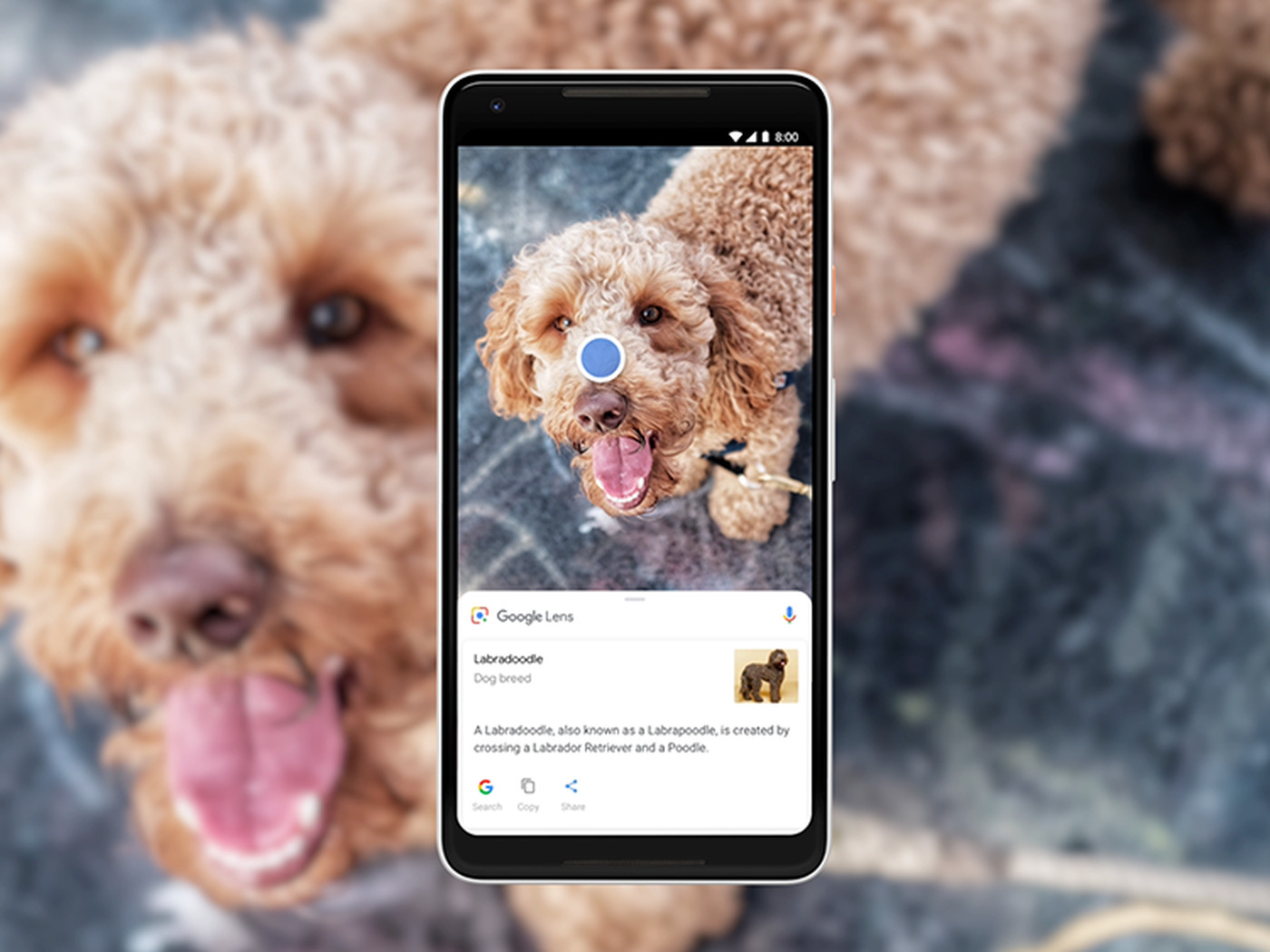Introduction
Google Lens is an innovative visual search technology developed by Google. It utilizes artificial intelligence and machine learning algorithms to recognize and interpret images captured by a smartphone’s camera. Originally introduced as a feature of Google Photos, Google Lens has since evolved into a standalone app, providing users with a powerful tool for exploring the world around them in a whole new way.
With Google Lens, users can simply point their smartphone camera at an object, text, or location, and the app will provide relevant information and suggestions. Whether you want to identify a landmark, translate foreign text, search for similar products, or even copy and paste text from the real world, Google Lens offers a wide range of functionalities that can significantly enhance your smartphone experience.
By harnessing the power of Google’s extensive knowledge graph and vast database, Google Lens has become a valuable tool for various day-to-day tasks. From scanning barcodes and QR codes to adding contact information, Google Lens simplifies and streamlines many common actions, saving users both time and effort.
In this article, we will explore the different capabilities and features of Google Lens. We will delve into how it works, its ability to recognize and identify objects, its text recognition and translation capabilities, and how it helps in searching the web for more information about specific subjects or items. Furthermore, we’ll discuss its ability to scan barcodes and QR codes, and how it simplifies tasks such as saving and sharing business cards, finding similar products, making restaurant reservations, navigating and getting directions, copying and pasting text, translating and pronouncing foreign words, scanning documents, and organizing and saving notes. By the end, you will have a comprehensive understanding of what Google Lens is and how it can revolutionize your daily smartphone usage.
How Does Google Lens Work?
Google Lens combines the power of computer vision, machine learning, and artificial intelligence to analyze and interpret the visual world captured through your smartphone’s camera. The process starts by capturing an image or video using the Google Lens app or accessing it through Google Assistant on supported devices.
Once an image is captured, Google Lens uses sophisticated algorithms to analyze the visual data in real-time. It identifies objects, text, and landmarks by comparing the visual data with its vast database of known images and patterns. This database is constantly being updated and refined to improve accuracy and expand the range of objects and texts that Google Lens can recognize.
The machine learning capabilities of Google Lens enable it to continually learn and improve its recognition abilities. As more users interact with Google Lens and provide feedback, the system becomes more accurate in identifying objects, recognizing text, and understanding context.
In addition to object recognition, Google Lens has powerful text recognition capabilities. It can extract and interpret text from images, allowing users to easily copy and paste text from the real world onto their devices. Whether it’s capturing a phone number, a recipe, or important information from a document, Google Lens makes it convenient to digitize and utilize text without the need for manual transcription.
Google Lens also leverages the web to provide users with more information about recognized objects and texts. By using Google’s vast search index, Google Lens can offer contextual information, similar images, and relevant search results related to the identified object or text. This feature allows users to delve deeper into their search and access more detailed information about what they are viewing.
Furthermore, Google Lens integrates with other Google services, such as Google Maps and Google Translate, to provide enhanced functionality. Users can use Google Lens to scan barcodes and QR codes, which can be especially useful when shopping or accessing additional information about products. Additionally, Google Lens can translate foreign text in real-time, making it convenient for travelers or language learners.
In the next sections, we will discuss the specific functionalities and use cases of Google Lens in more detail. From identifying objects to translating text and scanning documents, Google Lens offers a wide range of features that can simplify and enhance your everyday tasks.
Recognizing and Identifying Objects
One of the key capabilities of Google Lens is its ability to recognize and identify objects captured through your smartphone’s camera. Whether it’s a landmark, a plant, an animal, or a household item, Google Lens can provide information and insights about what you’re looking at.
When you point your camera at an object, Google Lens analyzes the visual data and compares it with its vast database of known images. It then uses advanced machine learning algorithms to determine the most likely identity of the object. This can be particularly helpful when you come across an unfamiliar object and want to learn more about it.
For example, if you’re visiting a new city and come across a famous monument or landmark, you can simply open the Google Lens app, point it at the landmark, and Google Lens will provide information about the history, architecture, and significance of the landmark. This can enhance your travel experience by giving you insights into the places you visit.
In addition to landmarks, Google Lens can identify various types of plants and animals. For gardening enthusiasts or nature lovers, this feature can be invaluable. By using Google Lens, you can quickly identify different species of plants, flowers, or animals, and access information about their characteristics, care instructions, and habitat. This can help you better understand your surroundings and deepen your knowledge of the natural world.
Google Lens also excels in recognizing everyday objects and products. Whether it’s a piece of furniture, a piece of artwork, or a specific type of food, Google Lens can provide useful information about the object. This can be particularly handy when you come across an item you’re interested in purchasing, as Google Lens can display shopping links, reviews, and price comparisons, allowing you to make more informed decisions.
Furthermore, Google Lens can identify logos, brands, and even specific models of products. This can be beneficial when you’re looking to find more information about a particular product or when you want to verify the authenticity of a brand. By simply pointing your camera at the logo or item, Google Lens can retrieve relevant information, customer reviews, and related products.
Overall, the ability of Google Lens to recognize and identify objects provides immense value and convenience. From learning about landmarks and wildlife to accessing detailed product information, Google Lens empowers users with a wealth of knowledge right at their fingertips.
Text Recognition and Translation
Google Lens is not only adept at recognizing objects but also excels in text recognition and translation. This feature allows users to easily extract and interpret text from images and translate text in real-time, making it a versatile tool for various language-related tasks.
When you encounter a piece of text that you want to digitize or understand, you can simply point your camera at it with Google Lens. The app will then quickly analyze the image and extract the text, allowing you to copy and paste it onto your device. Whether it’s a phone number, a recipe, or important information from a document, Google Lens simplifies the process of capturing and utilizing text from the real world.
In addition to text extraction, Google Lens offers a robust translation feature. By using Google’s translation services, Google Lens can translate foreign text in real-time. This can be incredibly useful when traveling in a foreign country or when encountering text in a language you’re not familiar with.
For example, let’s say you’re exploring a menu at a restaurant abroad, and it’s written in a language you don’t understand. With Google Lens, you can capture the text and instantly see the translated version on your device. This allows you to make more informed decisions about what to order and eliminates language barriers.
Furthermore, Google Lens can also pronounce foreign words for you, enabling you to learn how to say new words and phrases. This can be beneficial for language learners or for individuals who want to communicate more effectively in a different language.
Moreover, Google Lens can recognize different types of text formats, including handwritten text. This means that you can capture and digitize handwritten notes, letters, or any other handwritten content that you come across. It enables you to easily store and organize handwritten information digitally, eliminating the need for manual transcription and saving valuable time.
Whether it’s extracting text from images or translating foreign languages on the go, Google Lens provides a reliable tool for text recognition and translation. Its accurate and efficient capabilities can enhance productivity, aid language learning, and simplify various language-related tasks.
Searching the Web for More Information
One of the standout features of Google Lens is its seamless integration with Google’s vast search index. This integration allows users to quickly search the web for more information about the objects, landmarks, or text they encounter.
When you come across an object or landmark that you want to learn more about, simply capture an image of it using Google Lens. The app will then use image recognition and compare the visual data against its extensive database to provide relevant search results. This feature allows you to delve deeper into your search and access detailed information, articles, and websites related to the identified object.
For example, if you’re exploring a city and stumble upon an interesting piece of street art, you can use Google Lens to capture an image. From there, Google Lens will provide you with information about the artist, the artwork’s history, and any relevant news or interviews associated with it. This gives you a deeper understanding and appreciation of the art you’re encountering.
In addition to object recognition, Google Lens can search the web for information related to specific text. Whether it’s a book, a document, or a sign, Google Lens can capture and analyze the text, offering relevant search results and articles based on the content. This feature can be particularly useful when you want to research a topic mentioned in a document or find additional resources related to a book you come across.
Furthermore, Google Lens can provide you with contextual information about famous landmarks, historical buildings, or popular tourist attractions. By using augmented reality (AR), Google Lens can overlay relevant information and details directly on the camera view, giving you a comprehensive understanding of the place you’re exploring.
Moreover, Google Lens can recognize famous artworks and paintings, providing you with information about the artist, the painting’s history, and any interpretations or analysis. This enriches your art viewing experience by offering insights and context that enhance your appreciation of the artwork.
Overall, Google Lens’s integration with Google’s search capabilities opens up a wealth of information and insights about the world around us. By simply capturing images or text, users can access relevant search results, articles, and contextual information, empowering them with a deeper understanding of the subjects they encounter.
Scanning Barcodes and QR Codes
Google Lens provides a convenient and efficient way to scan barcodes and QR codes using your smartphone’s camera. This functionality can be incredibly useful when shopping, comparing prices, accessing additional information about products, or interacting with digital content.
When you encounter a barcode or QR code, simply open the Google Lens app and point your camera at it. Google Lens will quickly scan and analyze the code, providing relevant information based on the type of code and its associated data.
Barcodes are commonly found on product packaging and are used to encode information such as the product’s name, price, and manufacturer. By scanning a barcode with Google Lens, you can quickly access detailed product information, customer reviews, and even price comparisons across different retailers. This feature empowers consumers with the ability to make more informed purchasing decisions, ensuring that they get the best value for their money.
In addition to barcodes, Google Lens can also scan and interpret QR codes. QR codes are versatile and widely used in various industries and scenarios. They can be found on advertisements, business cards, event tickets, signage, and more. QR codes can contain a wide range of data, including website URLs, contact information, event details, or even Wi-Fi network credentials.
With Google Lens, scanning QR codes becomes effortless. By simply pointing your camera at a QR code, Google Lens will decode the information embedded within the code and provide relevant actions and options. For example, if you scan a QR code on a business card, Google Lens can automatically add the contact information to your address book or provide options to call or email the person. Scanning a QR code on an event ticket can quickly provide you with event details, venue directions, or even the option to add the event to your calendar.
Moreover, Google Lens can also interpret QR codes that contain website URLs. If you scan a QR code that directs to a website, Google Lens will give you the option to open the website directly in your browser, eliminating the need to manually type in the URL.
By harnessing the power of barcode and QR code scanning, Google Lens simplifies tasks such as product research, contact management, event attendance, and accessing digital content. It streamlines the process of gathering information and interacting with the digital world, making it a valuable tool for everyday use.
Adding Contact Information
Managing contact information can be a time-consuming task, especially when you receive business cards or come across important details handwritten on paper. However, with Google Lens, adding contact information becomes effortless and streamlined.
When you receive a business card or come across handwritten contact information, simply open the Google Lens app and point your camera at the details. Google Lens will quickly recognize the text and provide you with the option to add the contact information directly to your device’s address book.
This feature saves you from manually typing in the contact details and ensures that you accurately capture the information. It also eliminates the risk of errors or misspellings that can occur when transferring contact details manually.
Furthermore, Google Lens goes beyond just adding the basic contact information. It can also identify and extract more details from the text, such as email addresses, phone numbers, job titles, and company names. This enriched contact information can be especially useful when you want to quickly find someone’s email or phone number without searching through multiple fields in your address book.
In addition to recognizing and adding contact information from business cards and handwritten notes, Google Lens can also help you manage your digital contacts. When you come across a person’s name or contact information on a website, email signature, or social media profile, Google Lens can recognize the text and provide options to add or edit the contact details on your device.
This seamless integration with the digital world ensures that you can keep your contacts organized and up-to-date without the need for manual data entry.
Overall, Google Lens simplifies the process of adding and managing contact information. Whether it’s capturing details from business cards, handwritten notes, or digital sources, Google Lens saves you time and effort by accurately adding and enriching your contacts with ease.
Saving and Sharing Business Cards
Google Lens offers a convenient solution for saving and organizing business cards digitally. Instead of manually inputting contact details or accumulating physical cards, you can simply use Google Lens to capture and store the information on your smartphone.
When you receive a business card, open the Google Lens app and point your camera at the card. Google Lens will instantly recognize the text on the card, including the name, phone number, email address, and any other relevant details. It then provides you with the option to save the contact directly to your device’s address book.
This functionality eliminates the need to keep physical business cards, reducing clutter and making it easier to access the contact information whenever needed. By saving business cards digitally, you can quickly search and find contacts, even if you can’t recall specific details.
In addition to saving business cards, Google Lens also offers the option to share business card information with others. After scanning a business card, you can use Google Lens to generate a shareable contact card. This virtual card contains all the contact details, making it easy to send to colleagues, clients, or any other interested parties with a simple tap.
With the ability to save and share business card information digitally, Google Lens makes networking and collaboration more efficient. It ensures that important contact details are easily accessible, searchable, and shareable, enhancing professional communication and relationship management.
Moreover, by storing business card information digitally, you are less likely to lose or misplace important contacts. The convenience of having all your business contacts in one place and the ability to quickly search for specific individuals can greatly improve productivity and save time.
Overall, the ability to save and share business cards using Google Lens simplifies contact management and reduces reliance on physical cards. It enables you to keep your professional contacts organized, accessible, and easily shareable in the digital realm.
Finding Similar Products
Google Lens provides a powerful tool for finding similar products based on the items you come across in your daily life. Whether it’s a piece of clothing, a piece of furniture, or a home appliance, Google Lens can help you discover similar products and explore a wider range of options.
When you encounter a product that catches your eye, simply use Google Lens to capture an image of it. With its advanced image recognition technology, Google Lens will analyze the visual data and identify the product. It will then provide you with a selection of similar products that match the style, design, or functionality of the item you captured.
This feature is particularly useful when you want to find alternatives or compare prices across different brands and retailers. By offering a variety of similar products, Google Lens allows you to make more informed purchasing decisions, ensuring that you find the product that best suits your preferences and needs.
In addition to finding similar products, Google Lens can also provide additional information about the item you captured. This can include customer reviews, ratings, specifications, and even recommendations based on your preferences or browsing history. Such insights can help you gain a better understanding of the product and assist you in making a well-informed decision.
Furthermore, Google Lens allows you to easily save and organize the products you come across. By utilizing the save feature within the app, you can create lists, categorize items, and keep track of your favorite products. This comes in handy, especially when you want to revisit a particular item or compare it with other options at a later time.
Additionally, Google Lens integrates with Google’s shopping services, offering a seamless shopping experience. When you find a product you’re interested in, Google Lens can provide you with direct links to online retailers where you can make a purchase. This simplified purchasing process eliminates the need for extensive searching and saves you time and effort.
Overall, the ability of Google Lens to find similar products empowers users to explore a wider range of options, discover new brands, and make well-informed purchasing decisions. By utilizing its advanced image recognition and integration with shopping services, Google Lens enhances the overall shopping experience and ensures that you find the perfect product.
Making Restaurant Reservations
Google Lens simplifies the process of making restaurant reservations by seamlessly integrating with popular reservation platforms. Whether you come across a restaurant through an advertisement or a recommendation, Google Lens can help you quickly secure a table at your desired location.
When you come across information about a restaurant, such as its name or signage, simply use Google Lens to capture the text or image. Google Lens will analyze the visual data and provide you with relevant information about the restaurant, including its name, contact details, and customer reviews.
Furthermore, Google Lens can offer a direct link to the restaurant’s reservation platform if available. By tapping on the reservation link, you can easily access the restaurant’s booking system and check for availability. This eliminates the need to search for the restaurant’s website or navigate through multiple screens to make a reservation.
In addition to reservation links, Google Lens can also show you the available reservation timings for the restaurant. This feature allows you to quickly view the upcoming time slots and choose a convenient time for your dining experience.
Moreover, Google Lens can provide insights into the restaurant’s popularity and rating based on customer reviews. By displaying an aggregated rating and snippets of customer feedback, Google Lens helps you gauge the overall dining experience at the restaurant before making a reservation.
By streamlining the reservation process, Google Lens saves you time and effort. Instead of manually searching for restaurant websites or calling to make reservations, you can quickly access the necessary information and book your table directly through the app.
It’s worth noting that while Google Lens can assist with restaurant reservations, availability may vary depending on the restaurant’s partnership with reservation platforms. Be sure to check if the restaurant utilizes a supported booking system, which will allow you to make a reservation seamlessly through Google Lens.
In summary, Google Lens’s integration with reservation platforms simplifies the process of making restaurant reservations. By providing quick access to information, availability, and booking links, Google Lens enhances the dining experience and ensures a seamless and convenient reservation process.
Navigating and Getting Directions
Google Lens offers a convenient and user-friendly way to navigate and get directions to your desired destinations. With its integration with Google Maps, Google Lens provides a seamless experience for finding your way and getting to your intended location.
When you come across a location, such as a street sign, a building, or a business, simply use Google Lens to capture an image of it. Google Lens will quickly analyze the visual data and identify the location. It will then offer you various options to navigate to that place using Google Maps.
By tapping on the navigation option within Google Lens, you can effortlessly launch Google Maps with the destination pre-filled. This allows you to access turn-by-turn directions, real-time traffic updates, and alternative routes to reach your destination efficiently.
One of the benefits of using Google Lens for navigation is its seamless integration with other Google services. For example, if you encounter a restaurant and want to navigate there, Google Lens can not only provide directions but also offer additional restaurant information, such as customer reviews, opening hours, and contact details. This comprehensive information allows you to make informed decisions about your destination.
In addition to navigation, Google Lens can also assist in discovering points of interest, landmarks, or nearby attractions. When you scan a location using Google Lens, it can provide you with relevant information and suggestions about notable places in the vicinity. This feature is especially useful when you are exploring a new area or looking for things to do nearby.
Furthermore, Google Lens’s integration with Google Street View enhances the navigation experience. By providing a 360-degree view of the location you scanned, Google Lens helps you gain a better understanding of the surroundings and identify landmarks or recognizable features. This visual aid further aids in navigation and orientation.
Whether you’re exploring a new city or trying to find your way around unfamiliar places, Google Lens’s navigation and directions feature simplifies the process. By seamlessly integrating with Google Maps, providing comprehensive information, and leveraging Google Street View, Google Lens ensures a smooth and efficient navigation experience.
Copying and Pasting Text
Google Lens offers a convenient and efficient way to digitize text from the real world and seamlessly copy and paste it onto your device. Whether it’s a phone number, a recipe, or important information from a document, Google Lens simplifies the process of extracting text and making it accessible for further use.
When you come across a piece of text that you want to capture and use digitally, simply open the Google Lens app and point your camera at the text. Google Lens will quickly analyze the image and extract the text, making it available for copying and pasting onto your device.
This functionality eliminates the need for manual transcription or typing, saving you time and effort. Instead of manually entering a long string of text, you can quickly capture it with Google Lens and paste it directly into your desired application, such as notes, messages, or documents.
Google Lens is versatile in its ability to recognize various types of text, including printed text and handwritten notes. It utilizes advanced optical character recognition (OCR) technology to accurately extract the text from images, ensuring precise and reliable results.
This feature is particularly useful for capturing and digitizing handwritten notes, letters, or any other handwritten content that you come across. By using Google Lens, you don’t have to worry about losing or misplacing handwritten information. You can easily store and access it digitally, allowing for better organization and easy searching.
In addition, Google Lens supports multilingual text recognition, enabling you to capture and extract text from a variety of languages. This can be beneficial for language learners, travelers, or individuals dealing with multilingual content.
Moreover, Google Lens offers real-time text recognition. This means that it can extract and interpret text in real-time as you move your camera over it. This is particularly useful when you want to capture information quickly or when dealing with time-sensitive text, such as live event announcements or schedules.
Overall, Google Lens’s ability to copy and paste text from the real world streamlines digital content creation, note-taking, and information gathering. By eliminating the need for manual transcription, it saves time, reduces errors, and enhances productivity.
Translating and Pronouncing Foreign Words
Google Lens is a versatile tool that can assist with translating and pronouncing foreign words in real-time. Whether you’re traveling to a foreign country or encountering unfamiliar words in your daily life, Google Lens can help you overcome language barriers and expand your linguistic capabilities.
When you come across foreign text that you want to understand or translate, simply open the Google Lens app and point your camera at the text. Google Lens will quickly recognize the characters and offer you the option to translate them into your preferred language.
This translation feature extends to various types of text, including signs, menus, labels, and more. By using Google’s robust translation services, Google Lens can provide accurate translations on the spot, allowing you to grasp the meaning of the words and phrases you encounter.
In addition to translation, Google Lens can also assist with pronunciation. For words that you’re unfamiliar with or struggle to pronounce correctly, Google Lens can provide audio pronunciations. By tapping on the audio icon after translating a word, you can hear the correct pronunciation, helping you learn and communicate more effectively.
This pronunciation feature is particularly useful for language learners, travelers, or individuals who want to improve their language skills. It facilitates the understanding and usage of foreign words, enhancing cross-cultural communication.
Furthermore, Google Lens’s translation functionality can support bi-directional translation for select languages. This means that you can translate text from your native language to a foreign language and vice versa. This feature enables seamless communication in multilingual settings and assists in bridging language gaps.
Google Lens also provides the option to save translated text for future reference. When you encounter important translations, you can easily save them within the app, allowing you to access and revisit them at a later time. This is especially helpful when trying to remember new vocabulary or when preparing for language-related tasks.
Overall, Google Lens’s translation and pronunciation capabilities break down language barriers and enhance cross-cultural communication. By facilitating real-time translation and offering audio pronunciations, it empowers users to understand and pronounce foreign words accurately and confidently.
Scanning Documents
Google Lens provides a convenient and efficient way to scan documents using your smartphone’s camera. Instead of using traditional document scanners or making photocopies, you can simply use Google Lens to capture and digitize important documents, receipts, notes, or any other paper-based content.
When you’re faced with a document that you want to digitize, open the Google Lens app and point your camera at the document. Google Lens will quickly analyze the image and extract the text and content from the document. It utilizes advanced image recognition and optical character recognition (OCR) technology to ensure accurate and reliable results.
The scanned document is then saved as a digital file, which you can easily access, store, and share. This eliminates the need for physical storage or carrying around stacks of paper, making it a convenient solution for organizing and managing documents.
In addition to scanning and extracting text, Google Lens can also provide further actions or options based on the content of the scanned document. For example, if you scan a business card, Google Lens may provide the option to save the contact information or add it to your address book. If you scan a receipt, Google Lens may offer to extract the purchase details and create an expense report.
Moreover, Google Lens offers various editing features to enhance the scanned documents. You can crop, rotate, or adjust the perspective of the document to ensure optimal readability and presentation. This is especially useful when dealing with documents that were captured at an angle or have uneven lighting.
Furthermore, Google Lens supports exporting the scanned documents to various file formats, including PDF and image formats. This allows for seamless sharing and compatibility with different devices and platforms.
Additionally, by utilizing Google’s cloud services, scanned documents are automatically backed up and synchronized across your devices. This means that you can access and manage your scanned documents from any device with the Google Lens app installed.
Google Lens’s document scanning feature offers a practical solution for users who need to digitize, store, and manage paper-based documents. By using your smartphone’s camera, it simplifies the process of scanning, extracting text, and organizing important documents, ultimately reducing clutter and increasing efficiency.
Organizing and Saving Notes
Google Lens provides a convenient and effective way to organize and save your notes digitally. Instead of relying on physical notebooks or scattered pieces of paper, you can capture and store your notes using the power of Google Lens and your smartphone’s camera.
When you jot down notes on paper, simply open the Google Lens app and point your camera at the content. Google Lens will quickly analyze the text and convert it into digital format, making it easily accessible and searchable. This eliminates the need to manually transcribe or retype your handwritten notes.
By utilizing advanced optical character recognition (OCR) technology, Google Lens accurately recognizes and digitizes your handwritten notes. It preserves the integrity of the original content, ensuring that your notes are faithfully transcribed and remain true to your original intentions.
Once your notes are digital, Google Lens offers various organizational features to keep your notes in order. You can create folders or categories, tag notes with keywords, or add labels to easily retrieve and sort them later. These organizational features allow you to have a systematic approach to managing your notes, making it easier to find specific information when needed.
Furthermore, with Google Lens’s cloud integration, your digital notes are automatically synchronized and backed up across your devices. This means that you can access and manage your notes from any device with the Google Lens app, ensuring that your information is always up-to-date and readily available.
In addition to organizing your notes, Google Lens also offers editing capabilities to enhance your digital notes. You can easily edit, format, or add additional content to your notes directly within the app. This flexibility allows you to refine your notes and make necessary changes without the hassle of rewriting or copying text.
Moreover, by using Google Lens to save and organize your notes, you reduce the chances of losing or misplacing important information. Your digital notes are secure, conveniently stored, and readily accessible whenever you need them.
Google Lens’s capability to organize and save notes digitally revolutionizes the way we capture, store, and manage our handwritten information. By offering OCR technology, organizational tools, cloud synchronization, and editing features, Google Lens simplifies and streamlines the note-taking process, ensuring that your valuable information is organized and easily retrievable.
Conclusion
Google Lens is a powerful and versatile tool that enhances our smartphone experience by providing a range of features and functionalities. From recognizing and identifying objects to translating foreign text, scanning documents, and organizing notes, Google Lens offers a wide array of capabilities that simplify and streamline various tasks.
With its advanced image recognition and machine learning algorithms, Google Lens accurately analyzes and interprets the visual world captured through our smartphone’s camera. Its ability to recognize objects, landmarks, plants, animals, and everyday items provides us with valuable information and insights.
The text recognition and translation features of Google Lens further elevate its usefulness. By extracting and translating text in real-time, Google Lens breaks down language barriers and allows for easy copying and pasting of information from the real world onto our devices.
Scanning barcodes and QR codes with Google Lens simplifies shopping and accessing additional information about products-while saving and sharing business cards digitally reduces clutter and improves contact management.
Google Lens goes beyond object recognition and text extraction, offering navigation and directions, finding similar products, making restaurant reservations, and organizing notes. It seamlessly integrates with other Google services, such as Google Maps and Google Translate, providing a seamless and comprehensive user experience.
In conclusion, Google Lens is a remarkable tool that revolutionizes how we interact with our surroundings. It empowers us to explore, discover, and access information with a simple scan of our smartphone’s camera. By leveraging the power of artificial intelligence, machine learning, and Google’s extensive databases, Google Lens enhances productivity, saves time, and makes our everyday tasks more efficient and enjoyable.







